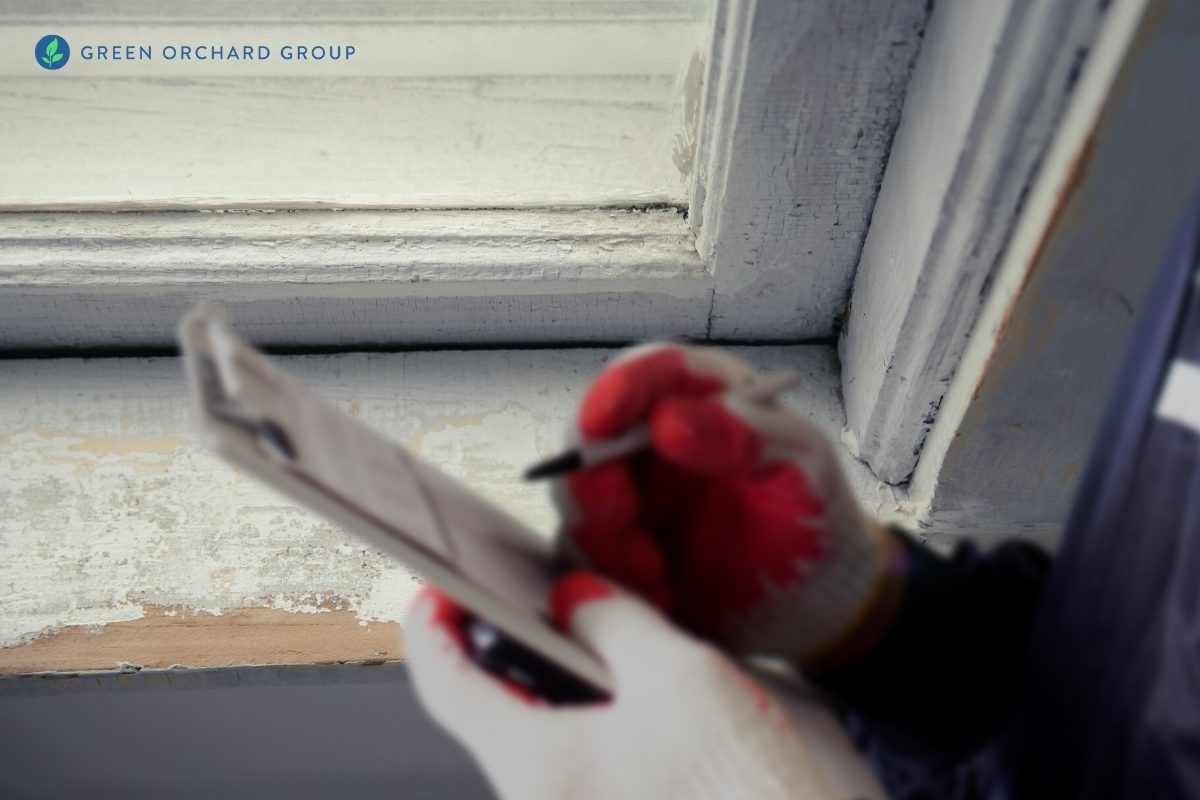NYC Lead Paint Removal Company-- Making Sure Safe and Legal Compliance
NYC Lead Paint Removal Company-- Making Sure Safe and Legal Compliance
Blog Article
Comprehensive Guide on Effective Lead Infraction Removal Methods
In the world of ecological safety, addressing lead violations requires a careful and structured technique. This thorough overview begins by highlighting the crucial initial steps of identifying lead threats with advanced evaluation and screening methods. The guide elaborates on the relevance of adhering to strict security procedures throughout the removal procedure, including the usage of correct PPE and isolating impacted locations.
Recognizing Lead Risks
Determining lead risks is an essential initial action in alleviating the dangers connected with lead direct exposure. Lead, a toxic metal, can be existing in various environmental mediums, consisting of paint, soil, water, and dust.
The first phase in identifying lead risks entails recognizing typical lead sources within the built atmosphere. Structures developed prior to 1978 are especially susceptible as a result of the prevalent use lead-based paint throughout that duration. Additionally, dirt contamination can happen from wearing away outside paint, commercial exhausts, or historical use of leaded gasoline.
One more significant source is lead piping and pipes fixtures, which can seep introduce alcohol consumption water. Consumer items such as playthings, ceramics, and imported products might additionally include dangerous lead levels. Especially, job-related settings and leisure activities involving lead can track impurities right into homes.
Analysis and Testing
When dealing with lead hazards, effective assessment and testing are critical. This vital step guarantees the identification and quantification of lead presence, therefore directing succeeding remediation initiatives. First analysis commonly involves a visual examination to recognize prospective lead resources, such as degrading paint or polluted dust. This is enhanced by even more strenuous screening methods to establish the degree of contamination.

Dirt clean sampling is an additional essential method, especially in domestic setups. By gathering samples from floors, windowsills, and other surfaces, this technique gives understandings into prospective direct exposure threats. Dirt testing around building borders is vital to find lead contamination that might position risks, particularly to children.
Safe Elimination Procedures
Upon completing complete analysis and testing, applying safe elimination procedures is the next essential stage in attending to lead risks. This procedure makes certain that lead-contaminated materials are successfully and securely gotten rid of, lessening danger to both employees and locals. The initial step involves separating the damaged area making use of plastic sheeting and appropriate securing techniques to avoid the spread of lead dirt.
Employees should don suitable individual protective equipment (PPE), including respirators, gloves, and disposable coveralls, to minimize exposure. Utilizing specialized tools and damp methods, such as wet fining sand or utilizing HEPA-filtered vacuum cleaners, reduces the dispersion of lead bits. It is vital to stay clear of dry sanding or rough blowing up, as these methods can produce harmful lead dirt.
Waste disposal is an additional vital component; all contaminated products have to be firmly gotten and labeled according to EPA and regional regulations. Furthermore, thorough cleaning of the Check Out Your URL workplace with HEPA vacuums and damp wiping ensures the elimination of recurring lead bits.
Post-Removal Verification

Confirmation of successful lead elimination, understood as post-removal verification, is imperative to ensure the safety and security and habitability of the remediated location. This examination ensures that all well-known sources of lead have actually been dealt with and that no visible indicators of contamination stay.
Adhering to the visual evaluation, environmental sampling is performed. This entails gathering dust, soil, and often water samples from the remediated location. Certified laboratories assess important source these examples to gauge lead degrees, guaranteeing they fall listed below the safety thresholds developed by regulatory bodies such as the Environmental Security Firm (EPA)
On top of that, air top quality testing might be carried out to spot airborne lead fragments, specifically in cases where comprehensive lead-based paint elimination or renovation has actually taken place. The outcomes of these examinations provide quantitative data validating that the lead degrees are within acceptable limits.
Eventually, post-removal confirmation functions as a crucial checkpoint, verifying the efficiency of the lead abatement efforts and guarding the health and wellness of residents and visitors.
Safety Nets and Upkeep

An essential preventative procedure consists of using lead-safe certified specialists for any remodelling, fixing, or more info here paint activities. These experts are educated in techniques that decrease lead dirt and particles. In addition, maintaining painted surface areas to prevent breaking or peeling is vital, as deteriorating paint can release lead particles into the environment.
Educational campaigns targeting residential or commercial property proprietors and renters concerning the dangers of lead and the significance of reporting any kind of potential dangers can further enhance preventive initiatives. Regular cleansing making use of HEPA vacuum cleaners and damp mopping methods can considerably lower lead dirt accumulation.
Conclusion
In recap, efficient lead violation removal demands a meticulous method encompassing extensive analysis, accurate screening, and strict removal treatments. Ensuring security through correct seclusion and individual safety equipment remains critical. Post-removal verification through ecological tasting and air top quality screening validates compliance with well established security requirements. In addition, continuous inspections and upkeep are vital to mitigate future lead threats, thus securing public health and making certain continual compliance with governing needs.
Report this page